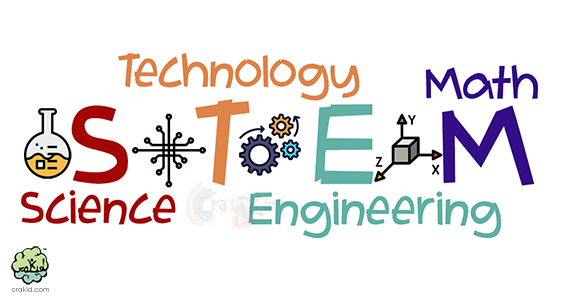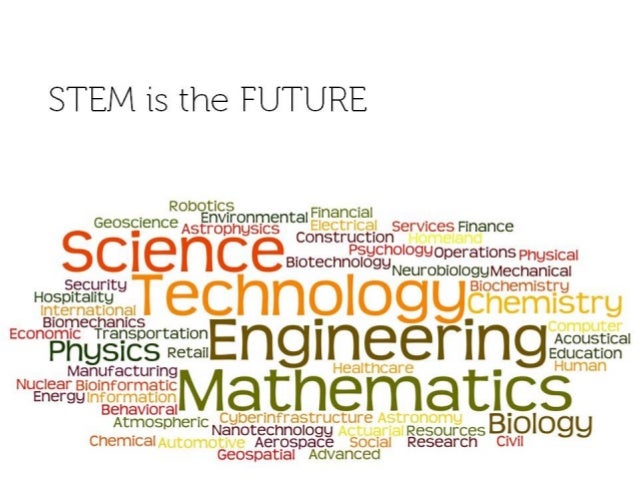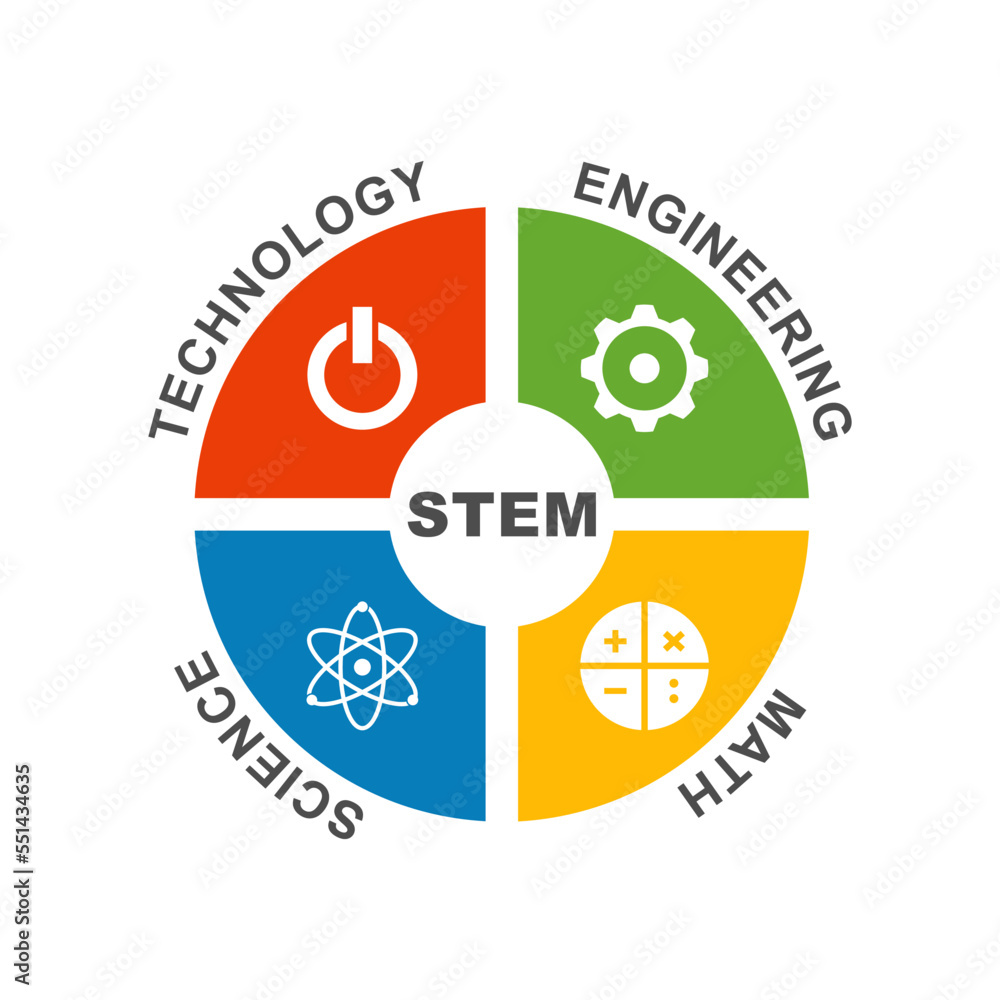STEM: Shaping the Future Through Science, Technology, Engineering, and Mathematics

STEM, an acronym for Science, Technology, Engineering, and Mathematics, has become a ubiquitous term in education, industry, and government circles. It represents a holistic approach to learning and problem-solving, emphasizing the interconnectedness of these four disciplines. Rather than teaching them in isolation, STEM education encourages students to apply scientific and mathematical principles to develop technological solutions and engineer practical designs. This integrated approach aims to cultivate critical thinking, creativity, and innovation, preparing individuals for the challenges and opportunities of the 21st century.
The Significance of STEM:
The rise of STEM as a global priority stems from several converging factors:
Economic Competitiveness: In an increasingly competitive global marketplace, nations are recognizing the crucial role of STEM-literate individuals in driving innovation, technological advancement, and economic growth. Countries with a strong STEM workforce are better positioned to develop new industries, attract foreign investment, and maintain a competitive edge.
Addressing Global Challenges: Many of the most pressing global challenges, such as climate change, food security, healthcare, and energy sustainability, require innovative STEM-based solutions. From developing renewable energy sources to engineering drought-resistant crops, STEM professionals are at the forefront of addressing these critical issues.
Workforce Demands: The demand for STEM professionals is rapidly growing across various sectors. From software development and data science to biomedical engineering and aerospace, industries are actively seeking individuals with strong STEM skills. This demand is expected to continue to rise in the coming years, creating significant career opportunities for STEM graduates.
Technological Advancement: We live in an era of unprecedented technological advancement. New technologies are constantly emerging, transforming industries and reshaping our lives. To navigate this rapidly changing landscape, individuals need a solid foundation in STEM principles to understand, adapt to, and contribute to these advancements.

Informed Citizenry: STEM education is not just about preparing individuals for STEM careers. It also aims to cultivate a scientifically literate citizenry capable of understanding complex issues, making informed decisions, and participating effectively in a technologically driven society.


The Core Components of STEM Education:
STEM education is more than just the sum of its parts. It’s a holistic approach that integrates science, technology, engineering, and mathematics in meaningful ways. Here’s a closer look at each component:
Science: Science provides the foundational knowledge and understanding of the natural world. It encompasses disciplines such as biology, chemistry, physics, and earth science. STEM education emphasizes the scientific method, encouraging students to ask questions, formulate hypotheses, conduct experiments, analyze data, and draw conclusions.
Technology: Technology involves the application of scientific knowledge to create tools, systems, and processes that solve problems and improve lives. STEM education focuses on developing students’ understanding of technology, their ability to use technology effectively, and their capacity to design and create new technologies.
Engineering: Engineering is the application of scientific and mathematical principles to design, build, and maintain structures, machines, and systems. STEM education emphasizes the engineering design process, which involves identifying a problem, brainstorming solutions, prototyping, testing, and refining designs.
Mathematics: Mathematics provides the essential language and tools for understanding and quantifying the world around us. STEM education focuses on developing students’ mathematical skills, including problem-solving, critical thinking, and logical reasoning.
Key Characteristics of Effective STEM Education:
Effective STEM education is characterized by several key elements:
Inquiry-Based Learning: STEM education emphasizes inquiry-based learning, where students are actively involved in asking questions, exploring phenomena, and constructing their own understanding. This approach fosters curiosity, critical thinking, and a deeper engagement with the subject matter.
Project-Based Learning: Project-based learning is a cornerstone of STEM education. Students work on real-world projects that require them to apply their knowledge and skills from multiple STEM disciplines. This approach promotes collaboration, problem-solving, and the development of practical skills.
Hands-On Activities: STEM education is highly hands-on, with students engaging in experiments, building models, and designing prototypes. This experiential learning approach allows students to connect theoretical concepts to practical applications.
Real-World Relevance: STEM education emphasizes the relevance of STEM concepts to real-world problems and applications. Students learn how STEM can be used to address global challenges, improve lives, and create new opportunities.
Collaboration and Teamwork: STEM education promotes collaboration and teamwork. Students work together on projects, sharing ideas, and learning from each other. This approach fosters communication skills, problem-solving abilities, and the ability to work effectively in teams.
Critical Thinking and Problem-Solving: STEM education emphasizes critical thinking and problem-solving skills. Students are challenged to analyze information, evaluate evidence, and develop creative solutions to complex problems.
Creativity and Innovation: STEM education fosters creativity and innovation. Students are encouraged to think outside the box, explore new ideas, and develop innovative solutions.
Challenges and Opportunities in STEM Education:
Despite the growing recognition of the importance of STEM education, several challenges remain:
Teacher Shortage: There is a shortage of qualified STEM teachers, particularly in certain areas and disciplines. This shortage can limit the quality and availability of STEM education.
Equity and Access: STEM education is not equally accessible to all students. Students from underrepresented groups, such as minorities and low-income students, often face barriers to accessing quality STEM education.
Curriculum Development: Developing effective STEM curricula that integrate the four disciplines in meaningful ways can be challenging.
Assessment: Assessing STEM learning effectively requires the development of new assessment methods that go beyond traditional tests and quizzes.
Funding: Adequate funding is essential for supporting STEM education initiatives, including teacher training, curriculum development, and the provision of resources and equipment.
However, there are also significant opportunities for advancing STEM education:
Increased Awareness: The growing awareness of the importance of STEM education is creating momentum for change.
Government Initiatives: Governments around the world are investing in STEM education initiatives, providing funding and support for schools and educators.
Private Sector Involvement: The private sector is increasingly involved in STEM education, providing funding, resources, and mentorship opportunities for students and teachers.
Technological Advancements: Technological advancements, such as online learning platforms and virtual reality simulations, are creating new opportunities for STEM education.
Collaboration and Partnerships: Collaboration and partnerships between schools, universities, industry, and community organizations can help to strengthen STEM education.
The Future of STEM:
The future of STEM is bright. As technology continues to advance and global challenges become more complex, the demand for STEM-literate individuals will only continue to grow. By investing in STEM education, we can prepare the next generation of innovators, problem-solvers, and leaders who will shape the future. This includes fostering a more diverse and inclusive STEM community, ensuring that all students have the opportunity to pursue their passions and contribute to the advancement of science, technology, engineering, and mathematics.
FAQ About STEM:
Q: What does STEM stand for?
A: STEM stands for Science, Technology, Engineering, and Mathematics.
Q: Why is STEM education important?
A: STEM education is important because it prepares individuals for the challenges and opportunities of the 21st century, drives economic competitiveness, addresses global challenges, meets workforce demands, and fosters a scientifically literate citizenry.
Q: What are the key characteristics of effective STEM education?
A: Effective STEM education is characterized by inquiry-based learning, project-based learning, hands-on activities, real-world relevance, collaboration and teamwork, critical thinking and problem-solving, and creativity and innovation.
Q: What are some of the challenges in STEM education?
A: Some of the challenges in STEM education include a teacher shortage, equity and access issues, curriculum development challenges, assessment difficulties, and funding constraints.
Q: What are some of the opportunities for advancing STEM education?
A: Some of the opportunities for advancing STEM education include increased awareness, government initiatives, private sector involvement, technological advancements, and collaboration and partnerships.
Q: What are some examples of STEM careers?
A: Examples of STEM careers include software developer, data scientist, biomedical engineer, aerospace engineer, environmental scientist, and mathematician.
Q: How can I get involved in STEM?
A: You can get involved in STEM by taking STEM courses, participating in STEM clubs and activities, attending STEM events, volunteering at STEM organizations, and pursuing a STEM career.
Q: Is STEM only for "smart" people?
A: No! STEM is for everyone. It’s about curiosity, problem-solving, and a willingness to learn. Anyone can develop STEM skills and contribute to the field.
Q: How can parents encourage their children to pursue STEM?
A: Parents can encourage their children to pursue STEM by fostering their curiosity, providing them with STEM-related toys and activities, supporting their participation in STEM clubs and events, and exposing them to STEM role models.
Q: What is the difference between STEM and STEAM?
A: STEAM is an extension of STEM that includes the Arts. It recognizes the importance of creativity and design thinking in STEM fields.
Conclusion:
STEM education is not just a trend; it’s a fundamental shift in how we prepare individuals for the future. By embracing a holistic, integrated approach to learning science, technology, engineering, and mathematics, we can cultivate a generation of innovators, problem-solvers, and leaders who are equipped to tackle the challenges and seize the opportunities of the 21st century. Investing in STEM education is an investment in our future, ensuring a more prosperous, sustainable, and equitable world for all. From addressing global challenges to driving economic growth, the power of STEM is undeniable, and its continued development is crucial for a brighter tomorrow.

